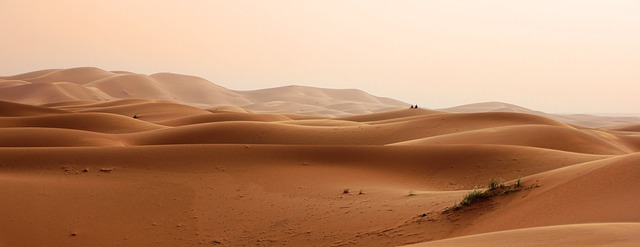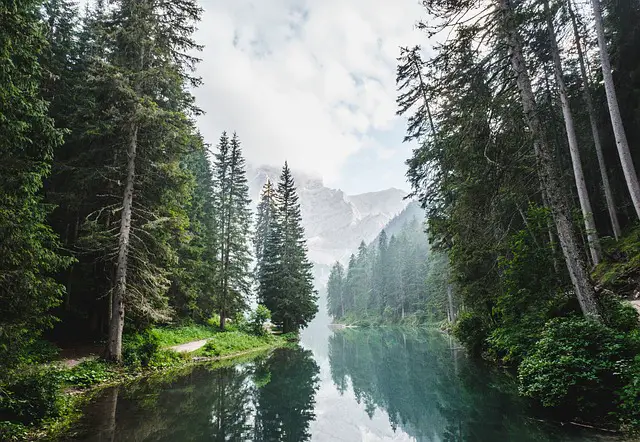Terrestrial biomes are land ecosystems, while aquatic biomes are water ecosystems. Terrestrial includes forests, deserts; aquatic includes oceans, lakes.
TL;DR Terrestrial biomes Vs. Aquatic biomes
Terrestrial biomes, found on land, encompass a wide range of habitats such as forests, deserts, grasslands, and tundras. These biomes are shaped by factors like climate, soil composition, and vegetation.
Aquatic biomes consist of various water bodies such as oceans, lakes, rivers, and wetlands. They support an incredible array of organisms adapted to life in water. Aquatic biomes are influenced by factors like temperature, salinity levels, sunlight penetration depth, and nutrient availability.
What are Terrestrial Biomes?

Terrestrial biomes are large geographic regions with distinct climate, soil, and vegetation patterns.
Examples include forests, deserts, grasslands, and tundras. Each biome harbors unique flora and fauna adapted to its environmental conditions. Terrestrial biomes play a crucial role in global ecosystems, influencing weather patterns, carbon cycling, and biodiversity.
They provide habitats for diverse species and contribute to the overall health and balance of the Earth’s ecosystems. Studying terrestrial biomes helps understand the complex interactions between organisms and their environments, aiding in conservation and sustainable land management practices.
What are Aquatic Biomes?

Aquatic biomes encompass diverse water ecosystems, including oceans, freshwater bodies like lakes and rivers, and wetlands.
These biomes vary in physical and chemical properties, influencing the types of organisms they support. Oceans, the largest biome, cover most of the Earth’s surface and are vital for climate regulation and biodiversity.
Freshwater biomes, found inland, provide habitats for numerous species. Wetlands, transitional zones between aquatic and terrestrial environments, offer unique ecological niches. Aquatic biomes play crucial roles in nutrient cycling, supporting diverse aquatic life, and are sensitive indicators of environmental health.
Terrestrial biomes Vs. Aquatic biomes – Key differences
| Feature | Terrestrial Biomes | Aquatic Biomes |
|---|---|---|
| Primary Environment | Land | Water |
| Examples | Forests, deserts, grasslands, tundras, etc. | Oceans, lakes, rivers, wetlands, etc. |
| Physical Characteristics | Soil, climate, vegetation patterns | Water depth, salinity, current flow, etc. |
| Flora and Fauna | Adapted to land environments | Adapted to aquatic environments |
| Major Types | Forest, desert, grassland, tundra, etc. | Marine, freshwater, wetlands, etc. |
| Climate Influence | Influences weather patterns | Influences climate and precipitation |
| Biodiversity | High biodiversity in various ecosystems | Rich biodiversity in diverse habitats |
| Human Impact | Agriculture, deforestation, urbanization | Pollution, overfishing, habitat loss |
| Conservation Challenges | Deforestation, land degradation | Pollution, habitat destruction, overfishing |
| Ecosystem Services | Oxygen production, carbon sequestration, etc. | Oxygen production, climate regulation, etc. |
Types of Aquatic Biomes
Aquatic biomes encompass diverse water ecosystems. Major types include:
- Marine Biome: Oceans, the largest biome, with diverse habitats like coral reefs, open ocean, and deep-sea environments.
- Freshwater Biome: Includes lakes, rivers, ponds, and wetlands, supporting unique flora and fauna adapted to freshwater conditions.
- Estuarine Biome: Transitional zones where freshwater rivers meet the saltwater of the ocean, forming estuaries with rich biodiversity.
- Wetland Biome: Areas with saturated or seasonally inundated soil, including swamps, marshes, and bogs, vital for water filtration and habitat.
Each aquatic biome has distinct characteristics, ecological functions, and species adapted to its specific conditions.
Types of Terrestrial Biomes
Terrestrial biomes encompass various land ecosystems. Major types include:
- Forest Biome: Includes tropical rainforests, temperate forests, and boreal forests, characterized by different climates and tree species.
- Grassland Biome: Features prairies, savannas, and steppes with herbaceous vegetation and grazing animals.
- Desert Biome: Arid regions with low precipitation, high temperatures, and adapted flora and fauna.
- Tundra Biome: Cold and treeless landscapes with permafrost, found in the Arctic and alpine regions.
- Chaparral Biome: Mediterranean climate areas with shrubs, adapted to periodic fires.
- Freshwater Biome: Includes rivers, lakes, and ponds, with diverse aquatic life.
- Wetland Biome: Transitional zones between aquatic and terrestrial environments, like swamps and marshes.
Each terrestrial biome has unique characteristics, climate, and biodiversity.
Image Credits
Featured Image By – [email protected] from Pixabay
Image 1 By – Greg Montani from Pixabay
Image 2 By – Pexels from Pixabay








